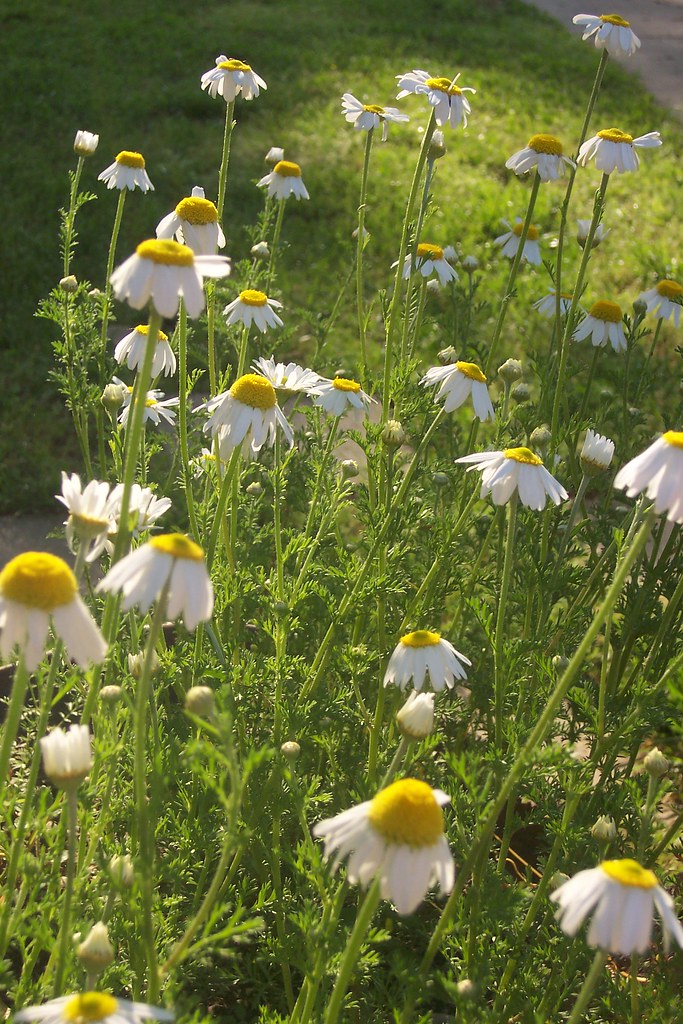
Self seeding annuals are a gift to gardeners that just keeps on giving. German chamomile certainly is one such self seeding. Somewhere along the way, perhaps in a wildflower mix, I picked some German chamomile seeds. It was not a plant I was familiar with when it began growing here about five or six years ago but I am most familiar with it now and like it very much.
Generally when you look for information on growing German chamomile you will find it prefers a sandy soil in full sun. Perhaps so, but here in my garden German chamomile grows in heavy clay, an old wheebarrow (Pictured), leaf mulch, and in mostly shade. Surprisingly the chamomile does well and it is a delight not only when it blooms but in the fall and winter when it begins sprouting in the garden.

German chamomile is an herb that is useful for treating a number of ailments. I have not personally used this plant as an herb but only enjoy mine growing in the garden. Additionally, in the right conditions I am sure German chamomile could become a pesky self seeding annual.Here in my garden it has never been a nuisance.
I have never physically planted a plant of German chamomile but I am always aware of where it is in my garden. It grows in spots where it thinks it will look great and I let it be. Soon after flowering this German chamomile will set more seeds and go dormant. But I know come fall I'll have some sweet new plants to look forward to enjoying....
in the garden....
Another favorite self seeding annual is the old fashioned Love in a mist.
Words and Photos Property of In the Garden Blog Team, In the Garden













